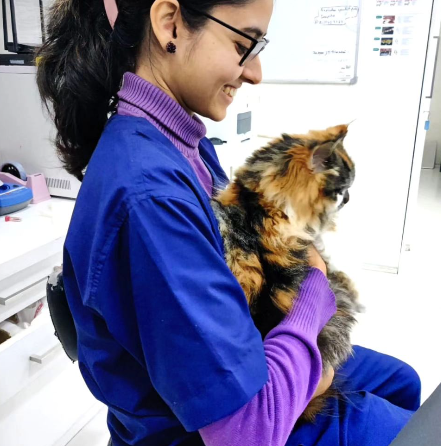The Spix’s macaw is a stunning blue parrot native to Brazil that is critically endangered. If you are lucky enough to have one of these rare birds as a pet, providing the proper housing is extremely important for its health and happiness. Choosing the right cage for a Spix’s macaw requires some special considerations. In this article we talk about How to Choose the Right Bird Cage For Spix’s Macaw.
Size Requirements
Spix’s macaws are large parrots, reaching up to 16 inches in length from head to tail. They need a very spacious cage to be able to spread their wings and move around comfortably.
The minimum recommended dimensions for a single Spix’s macaw cage are:
- Width: 4 feet
- Depth: 3 feet
- Height: 6 feet
This will provide enough interior space for perches, food bowls, and toys while allowing them to fly short distances inside. If housing more than one Spix’s macaw, the cage should be even larger.
Bar Spacing
The bars of a Spix’s macaw cage must be properly spaced to prevent injury or escape. The spacing between vertical bars should be no more than 3⁄4 inches. Horizontal bar spacing can be slightly wider at 1 to 1 1⁄4 inches. Avoid cages with wider spacing as Spix’s macaws can get their heads stuck between wider bar gaps which poses a major safety risk.
Horizontal Bars
Horizontal cage bars should run from side to side rather than front to back. This allows the Spix’s macaw to comfortably climb around using their beak and feet on the bars without having to constantly bend their neck sideways.
Sturdy Construction
Spix’s macaws are incredibly strong and intelligent birds that will test the strength of their cage relentlessly. They need an extremely sturdy cage constructed from thick, heavy-duty welded metal that cannot be chewed or bent. Avoid cages made with thin bars or inferior alloys prone to corrosion over time.
The cage should have multiple, well-secured latching points on every door to prevent clever escape attempts. Check that every weld is neatly finished with no sharp protrusions. All access doors must close tightly and securely.
Easy Access
While safety is paramount, convenience is also important in a Spix’s macaw cage. It should have large front access doors that swing open smoothly, preferably on more than one side. This allows easy servicing while minimizing escape opportunities during cleaning or interaction.
There should also be accessible food and water bowls that can slide in and out through access ports without needing to open cage doors. This reduces messes and makes feeding simpler.
Locks
Be sure to install high quality keyed or combination locks on every cage door. This prevents unauthorized opening of the cage by children or intruders that could result in tragedy for a rare bird like the Spix’s macaw.
Placement
Place the Spix’s macaw cage in a room that gets plenty of natural sunlight and where the birds are visible but away from drafts or direct heat vents. Avoid areas with high foot traffic to minimize disturbances. The cage should be securely fastened to prevent tipping and never placed directly on the floor where vermin can access it.
Interior Furnishings
The interior cage furnishings are vital for the health, happiness, and safety of a Spix’s macaw:
- Perches – Provide several natural wood perches of varying widths and orientations for exercise and to prevent foot sores.
- Food and Water Dishes – Use heavy, stainless steel bowls that attach securely inside the cage. Avoid plastic dishes.
- Toys – Intelligent Spix’s macaws need constant mental stimulation. Provide plenty of large, sturdy, bird-safe toys they can tear apart and chew. Rotate new toys frequently to prevent boredom. Avoid small parts they can choke on.
- Foraging Opportunities – Place treat-filled wicker balls, cardboard tubes, wood blocks drilled with holes for stuffing treats, and other challenging toys to keep them occupied for hours.
- Grit – Special supplements like mineral blocks, cuttlebones, and grit should always be available to aid digestion.
- Safety – Ensure there are no toxic metals, lead, zinc, or galvanized parts anywhere inside the cage. Any paint or coatings must be bird-safe.
With the proper sized cage that is well-constructed, secure, and thoroughly equipped for their needs, your rare Spix’s macaw will live a safe, healthy, and enriched life in captivity. Investing in the largest, best quality cage possible is well worth it for this critically endangered species. Be sure to do your research and get expert advice before selecting any cage for these special blue macaws. I sincerely hope you find this “How to Choose the Right Bird Cage For Spix’s Macaw” article helpful.

Dr. Hansika Singh is a skilled veterinarian with a Doctorate in Veterinary Medicine and over six years of hands-on experience in the field. Her expertise in pet health is complemented by a holistic approach that prioritizes both physical and emotional well-being. Dr. Singh is committed to providing high-quality care and practical advice to ensure pets lead healthy, happy lives.
As the leading expert on everythingpetstuff.com, Dr. Singh shares her extensive knowledge and insights through this platform and her popular social media channels. Follow her for valuable tips and advice on pet care: Instagram, YouTube, and Facebook.

